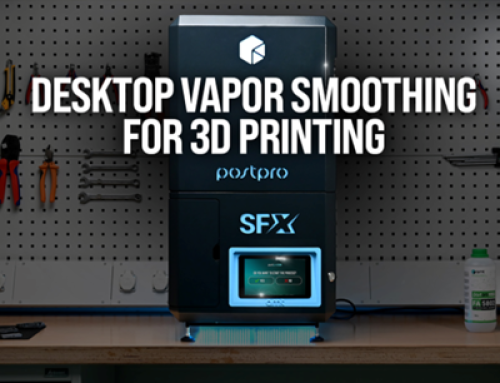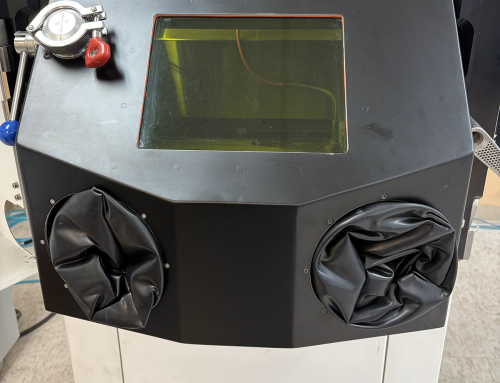3D printing is a powerful technology with the potential to significantly change the practice of medicine. In the field of structural heart disease, this rapidly evolving technology can make a powerful impact.
Limitations of two-dimensional imaging and added benefits of 3D printing
Current conventional cardiac imaging modalities such as echocardiography (EKG), cardiac computed tomography (CT) or magnetic resonance imaging (MRI) primarily utilize two-dimensional (2D) methods that require significant expertise and experience to interpret. In the field of pediatric or congenital cardiology, complex structural heart disease requires precise anatomical delineation before intervention. Consider a heart no larger than a walnut with multiple levels of abnormal connections. Using standard methods of visualization, whether by echo, CT or MRI, the interpreter essentially “reconstructs” a three-dimensional (3D) image from multiple slices or sweeps through this complex heart. By and large, this method works well for the structurally normal heart or for “simple” lesions (1); however, the challenges of interpretation and potential for errors are compounded for heart lesions of moderate or great complexity (1). Three-dimensional methods of visualization such as 3D echo, volume or surface rendering give the added perception of depth, but they are fundamentally limited by 2D displays on which they are viewed. Thus, complex, three-dimensional spatial relationships, such as pathways between the atrio-ventricular (AV) inflows, ventricular septal defects (VSDs) and cardiac outflows are limited to visualization in 2D planes that require significant expertise and experience to interpret accurately. Similar limitations exist in cases of abnormal extra-cardiac vasculature, where exact relationships between vascular (artery, vein, etc.) and non-vascular structures (airways, esophagus, etc.) are important to know, but difficult to interpret for complex abnormalities.
In the current era of multi-disciplinary care, these limitations of 2D imaging are especially relevant. Consider the patient with complex cardiovascular defects receiving care at a modern medical center. In this environment, the care team for such a patient usually consists of multiple subspecialists, each bringing their own expertise and experiences to the table. Within this team, the understanding of complex structural heart disease varies, either because of experience level (e.g., trainee versus experienced faculty) or background (e.g., imager vs. surgeon vs. intensivist). While the multi-disciplinary team is critical for comprehensive care of patients, variations in background makes accurately communicating a complex diagnosis challenging, and there is a potential for miscommunication and subsequent medical errors.
In recent years, 3D printing has emerged as a breakthrough technology for treating that offers several improvements over the status quo including (2-5):
- Improved patient care outcomes
- Trainee education and technical skills
- Patients and caregiver counseling
Enhanced pre-surgical planning and patient care outcomes
3D printing produces a replica of the patient’s anatomy. In patients with complex congenital heart disease (CHD), this allows precise understanding of the patient’s anatomy and the resultant physiology. 3D printing in CHD has been used in recent years as an adjunct to conventional imaging methods for surgical planning (6,7). This technology solves some of the challenges of 2D imaging discussed in the prior section by enabling more informed decisions and precise pre-surgical planning. The models help dissipate some of the mystery surrounding complex anatomic malformation by allowing practitioners to hold, inspect and manipulate the replica, and facilitate in-depth discussions within members of the multidisciplinary team (8,9). Additionally, the models enable better discussions with the patient and caregivers regarding the diagnosis and therapeutic options, as discussed in the next section.
For surgical planning, 3D models enable detailed planning based on a physical model that can be held, manipulated in real 3D space, and scrutinized to plan various aspects of the surgery, including surgical approach, incision, cannulation technique, etc.
In addition, 3D models facilitate thinking through of alternate plans (Plan A, Plan B, etc) and “exit strategies” if/when intraoperative complications arise. This sort of precise pre-surgical planning may lead to shorter operative times and fewer operative complications. Shorter cardiopulmonary bypass time, circulatory arrest time and fewer residual lesions requiring re-intervention are desired outcomes of precise pre-surgical planning from 3D printed models. These improvements in the operating room may translate to quicker recovery and a shorter post-operative hospital stay. Cardiac 3D printing is a nascent field, and at this time there is limited data to prove these beneficial outcomes. However, utilization of this technology is growing, and, with time, the potential benefits of 3D printing may be proven may be proven in scientific studies. Until we have data from large outcomes studies, the intuitive nature of 3D printing and clinical demand from surgeons and interventionalists will spur on this practice at leading cardiac programs. As one cardiothoracic surgeon described: “Having a 3D printed model is like walking down a dark street with the lights turned on.”
Ideal cases for cardiovascular 3D printing
Cardiovascular 3D printing has wide-raging applications, and the clinical utilization essentially depends on the needs of the medical and surgical teams. As discussed, in complex structural heart disease, advanced 3D visualization of intracardiac structures can significantly add to surgical planning. Examples include patients with outflow abnormalities, such as double outlet right ventricle (DORV). In these cases a complex intracardiac baffle or arterial switch may be required to successfully execute a two-ventricular repair.
Extracardiac cases benefiting from 3D printing include patients with complex vascular lesions. One example is the entity of pulmonary atresia and multiple aorto-pulmonary collaterals. For these patients, precise visualization of these abnormal vessels and relationship with surrounding structures (airways, veins, etc.) can assist surgeons plan a unifocalization surgery to minimize complications and blood loss.
Adult patients with congenital heart disease (ACHD) facing surgery can derive the same benefits of precise planning as previously discussed. In addition, in this population who may have previously undergone multiple heart surgeries, 3D printing allows surgeons to minimize the risks associated with sternal re-entry by precisely planning out the extent of dissection and cannulation techniques. Finally, in ACHD patients, 3D printing yields highly precise anatomic diagnoses, a distinct advantage over standard echocardiography, given deteriorating acoustic windows over time.
Lessons learned from 3D printing at our institution
- 3D modeling can be a time and labor intensive process, thus appropriate case selection is key.
- Discussion of clinical priorities for the 3D model with the referring provider is vital. For example, delineation of intracardiac anatomy and potential for two-ventricle repair in a patient with double outlet right ventricle.
- Quality control is paramount. Thus, active involvement of a physician with expertise in cardiac imaging is essential during key steps of 3D modeling (segmentation, design, printing, etc).
- Close communication with the 3D engineer, i.e., the individual performing segmentation, design, etc., is key.
- There are many different options for 3D models: rigid, multi-color, single-color, semi-rigid, etc. The type of 3D model used will be determined by the needs of the clinical team. Ideally, for teams taking care of complex patients, a printer capable of high-resolution prints in a variety of colors and material density provides the most flexibility for 3D printing.
For more information on our Stratasys line of 3D printers please click the button below.
[button link=”https://cimquest-inc.com/products/stratasys-3d-printing-solutions/” color=”default” size=”” stretch=”” type=”” shape=”” target=”_self” title=”” gradient_colors=”|” gradient_hover_colors=”|” accent_color=”” accent_hover_color=”” bevel_color=”” border_width=”1px” icon=”” icon_divider=”yes” icon_position=”left” modal=”” animation_type=”0″ animation_direction=”down” animation_speed=”0.1″ animation_offset=”” alignment=”left” class=”” id=””]More Info[/button]









Leave A Comment